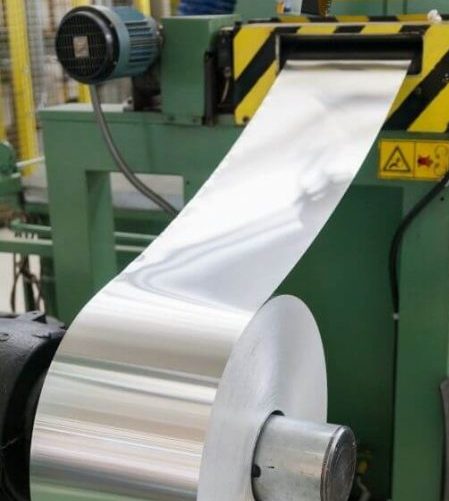Metal Stamping Innovations: Elevating Manufacturing Processes for Superior Results
In the realm of manufacturing processes, steel marking has actually long been a keystone strategy for producing an array of precision components. With the ruthless march of technical development, the landscape of metal marking is undergoing a significant transformation.
Advancement of Steel Marking Techniques

Furthermore, developments in product scientific research have actually caused the advancement of high-strength alloys that can now be flawlessly marked into complex forms, catering to a wider series of commercial applications. The integration of robotics and man-made knowledge has additionally maximized the stamping procedure by boosting speed and precision while decreasing the threat of human error.

Effect of Advanced Materials
Have innovative products changed metal marking procedures substantially in the production market? By using materials such as high-strength alloys, progressed compounds, and innovative finishings, steel marking processes can now generate components that are lighter, stronger, and a lot more sturdy than ever in the past.
These sophisticated products use premium mechanical buildings, rust resistance, and thermal security, permitting suppliers to meet the needs of contemporary industries such as aerospace, automobile, and electronic devices. In addition, using innovative materials in steel marking has actually promoted the manufacturing of intricate geometries and intricate designs that were previously unattainable through standard techniques.
Moreover, the execution of innovative products has actually led to minimized product waste, lower production expenses, and much shorter preparations, making steel stamping procedures extra lasting and economical. As technology continues to breakthrough, the effect of advanced products on steel marking procedures is anticipated to drive additional development and boost the competition of producers in the global market.
Automation in Metal Stamping
The evolution of metal marking processes driven by the assimilation of advanced materials has actually established the stage for significant improvements in automation within the production market. Automation in steel marking has changed manufacturing procedures, boosting performance, accuracy, and total outcome high quality. Via the use of robotics, sensing units, and computer-controlled systems, tasks that were lengthy and once manual can currently be executed with unparalleled rate and accuracy.
Automation in metal stamping not just accelerates production rates yet additionally ensures consistency in the manufacturing procedure. By lessening human treatment, the danger of mistakes is dramatically minimized, resulting in greater levels of item uniformity and integrity. Additionally, automation makes it possible for producers to take on complicated marking tasks that would certainly be impractical or difficult to attain manually.
Moreover, automation in steel marking adds to a much safer working setting by decreasing the demand for this article workers to participate in unsafe or recurring tasks - Metal Stamping. This shift in the direction of automation not only enhances efficiency however likewise paves the way for the future of manufacturing, where modern technology plays a main function in driving operational quality
Top Quality Control and Evaluation Equipments
With a concentrate on accuracy and reliability, quality assurance and examination systems play a crucial duty in ensuring item excellence in metal stamping procedures. These systems are designed to keep track of every stage of production, from material assessment to the last item, to guarantee that all components meet the needed criteria. By executing sophisticated innovations such as optical evaluation systems, coordinate determining equipments (CMM), and automated evaluating tools, suppliers can spot also the smallest discrepancies in measurements, surface area quality, and general integrity of stamped components.

Sustainability Practices in Metal Stamping
Building upon the structure of accuracy and integrity developed via quality assurance and inspection systems, the integration of sustainable methods in metal marking procedures is significantly coming to be a prime focus for manufacturers looking for to decrease ecological effect and enhance resource usage. Sustainability methods in metal stamping encompass a series of campaigns targeted at minimizing waste generation, power intake, and greenhouse gas exhausts throughout the production procedure.
One secret element of sustainability in metal stamping is the adoption of environment-friendly products and modern technologies that promote recyclability and waste reduction. By making use of recycled products and executing energy-efficient machinery, producers can decrease their carbon footprint continue reading this and add to a more sustainable production cycle. Additionally, maximizing production processes to lessen material waste and power usage not only benefits the environment but additionally causes set you back financial savings for businesses in the future.
Additionally, the application of sustainable techniques in steel marking click over here now can enhance brand name credibility and allure to ecologically conscious consumers. As sustainability proceeds to gain relevance in the manufacturing market, incorporating green initiatives right into steel stamping processes is vital for lasting success and competition in the market.
Conclusion
In conclusion, metal marking strategies have actually significantly developed gradually, integrating advanced materials and automation to boost manufacturing processes. Quality control and examination systems play an important duty in ensuring exceptional results, while sustainability techniques are significantly being implemented to decrease environmental effect. These technologies in steel stamping have reinvented the industry, resulting in more lasting and effective manufacturing methods for numerous industries.
Metal marking, as soon as a manual and labor-intensive procedure, has changed right into a very automated and sophisticated method of shaping steel sheets right into various kinds and designs.Have advanced products transformed steel stamping processes significantly in the manufacturing sector? By utilizing products such as high-strength alloys, progressed composites, and innovative layers, steel stamping processes can currently generate elements that are lighter, stronger, and more durable than ever before.
The advancement of steel stamping processes driven by the assimilation of sophisticated materials has actually established the stage for considerable developments in automation within the manufacturing sector.In verdict, metal stamping techniques have actually dramatically progressed over time, integrating advanced products and automation to improve making procedures.